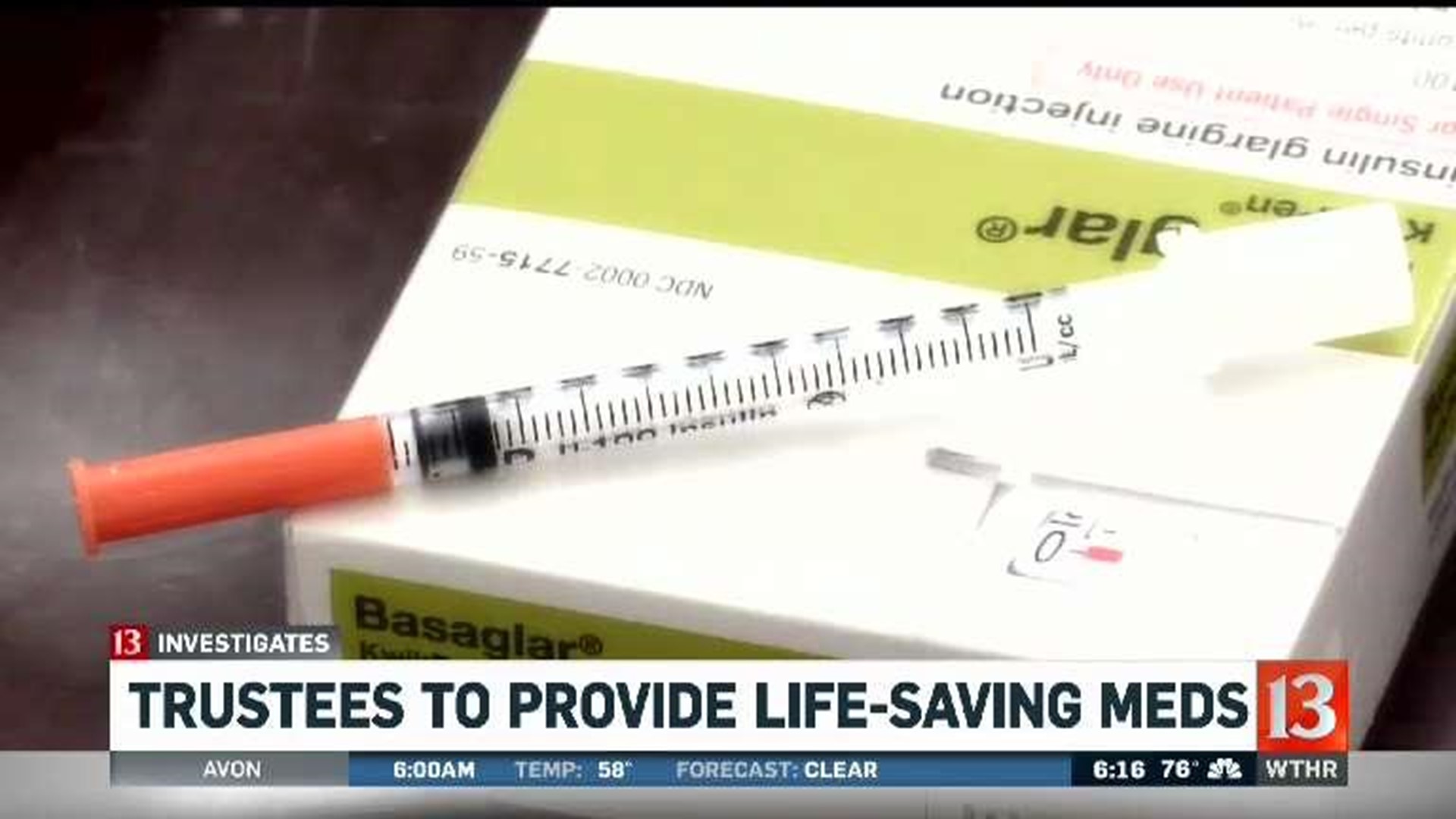INDIANAPOLIS (WTHR) — The cost of insulin has skyrocketed in recent years, and that has left Hoosiers like Christi Eggers with tough choices.
“Do I pay rent or do I buy insulin? Do I buy food or do I get my insulin? Those are the choices you face when you have Type 1 diabetes,” explained the Indianapolis mom, who’s been battling the disease since she was a teenager.
Eggers said five years ago, she paid about $30 for a vial of insulin. Now a vial of insulin can cost her over $500. The increase has been devastating, resulting in Eggers and her family being evicted from their westside apartment.

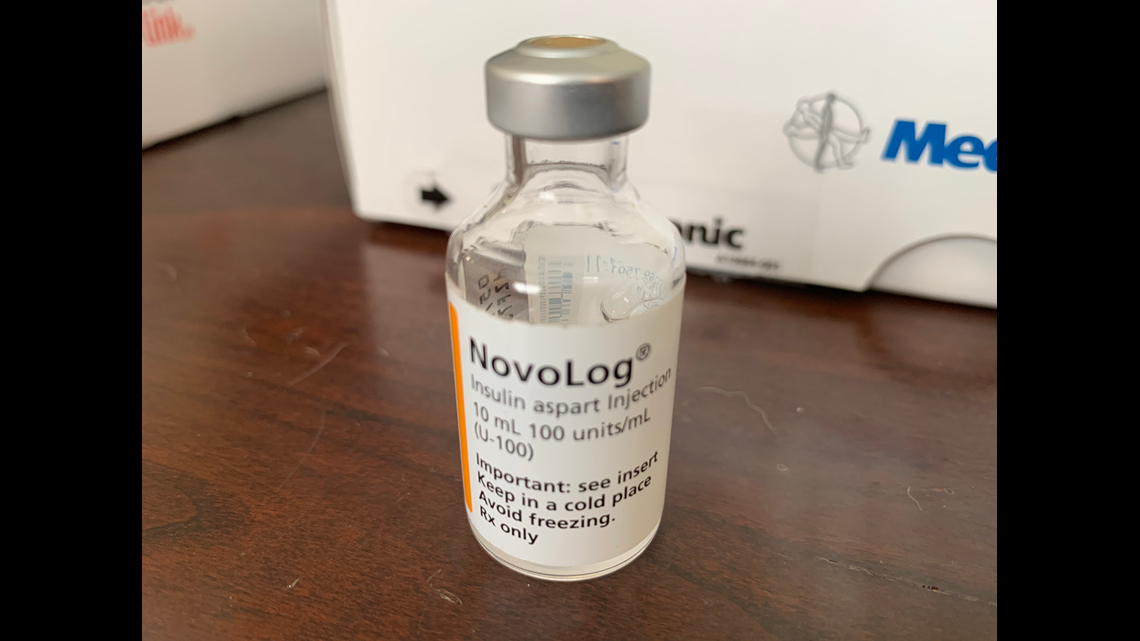
She then tried rationing her insulin to reduce the cost. Skipping injections did save money in the short term, but the insufficient amount of insulin resulted in large expenses from several days in a hospital intensive care unit.
“It’s frustrating because you have to have it to survive," she said. "Even if you can’t afford it, you have no choice. You shouldn’t have to be put in those positions, but that’s the roller coaster I face trying to survive the day as a diabetic.”
Eggers – along with many other Hoosiers who battle diabetes every hour of every day – did not realize that Indiana has some unique programs to help diabetics facing dire choices triggered by their disease. Those programs offer low-cost and even free insulin and related medical supplies to those who cannot afford them, but 13 Investigates found few people know the resources exist.
Severe highs and lows
When Eggers was diagnosed with diabetes at age 15, she had no idea how much the disease would eventually impact her life.
“At first, I was like ‘I got this’ and it was manageable,” she explained. “The first 10 years were a breeze.”
But in her 30s, as she raised two children and tackled the stresses of a working mom, the reality of living in a body that cannot produce its own insulin began to set in. Exhaustion. Vomiting. Irritability. Managing her blood sugar levels became increasingly difficult.
“My kids learned how to pour juice down my throat at a very young age — when they were four years old,” said Eggers, who loses consciousness when her blood sugar drops too low.
As her symptoms worsened, the cost of treating diabetes began to rise rapidly.
The average price of insulin tripled between 2002 and 2013, according to a study published in the medical journal JAMA. Then between 2012 and 2016, the price of insulin jumped again. According to the Washington Post, the annual cost of insulin for people with Type 1 diabetes in the U.S. increased from $2,900 to $5,700 during that 4-year stretch.
Eggers worked as a teacher’s aide, and her insurance helped cover most of the cost of her insulin. But ongoing symptoms of her diabetes forced her to miss 65 out of 182 school days during a single year, prompting her to resign.
“I loved my job, but the kids deserved better. They needed more stability and predictability than that,” she said. “I left for them, and I left because I didn’t want to get fired.”
Eggers found a job at retail clothing store, where an understanding boss set up a cot in a back room, so she could lay down when her blood sugar suddenly spiked or plummeted. Eventually she left that position, too, to focus on her diabetes. The disease became her full-time job.
At that point, Indiana’s state-sponsored insurance plan for low-income families would become Eggers new lifeline for battling her diabetes. The Healthy Indiana Plan (known as HIP) covers the majority of costs related to insulin and diabetic supplies. But Eggers said a series of delays, backlogs and administrative paperwork blunders by state workers have resulted in multiple coverage lapses that left her uninsured for weeks or even months at a time.
It's during those times that Eggers faced daunting decisions.
“You do what you have to do”
Her first eviction came in 2015, when Eggers delayed turning in her monthly rent check to instead pay more than $700 out-of-pocket for two types of insulin she needed to survive.

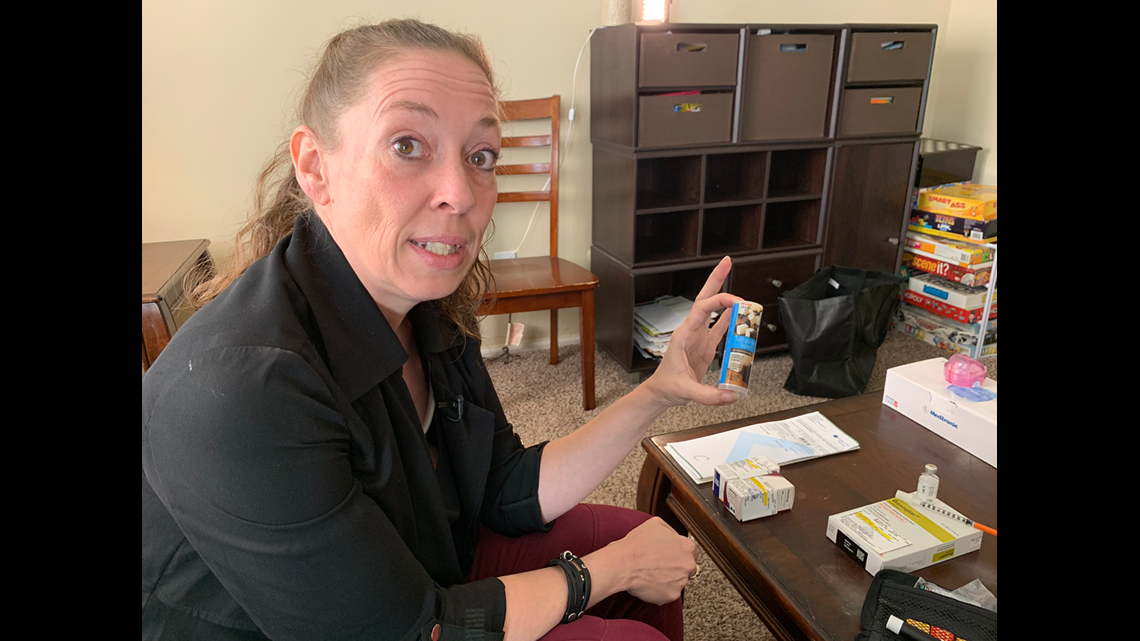
“We made the choice to buy my insulin for the month, thinking we’ll just pay rent late. They didn’t accept my late payment, so we had to leave the house,” Eggers said.
Not wanting her family to be homeless, Eggers came up with another plan: by eating less and sleeping more, she thought she might reduce the amount of insulin needed to regulate her blood sugar. Less insulin would mean less cost.
The strategy backfired. Too little insulin resulted in Eggers developing diabetic ketoacidosis, a dangerous complication of diabetes caused by high levels of acid building up in her blood.
“I just couldn’t afford the insulin price at the pharmacy, so I was trying to get by until my insurance would kick in,” Eggers explained. “I ended up in the ICU because of it and learned very quickly not to do that.”
Eggers said she’d prefer not to ration her insulin but still facing insurance interruptions and the high cost of insulin, she sees few other options.
“When you’re out [of insulin], you have no other choice. You get a loan. You beg. You borrow money. You find ways to cut back on how much you’re using. You do what you have to do,” she said. “Insulin is my oxygen. It’s everything.”
The law no one knows about
Realizing just how crucial insulin is as a life-saving drug, Indiana lawmakers decided decades ago to enact a law that ensures all Hoosiers have access to the medication.
They passed a series of bills that require township government to help cover basic necessities for those who cannot afford them. That included Section 1001 of Indiana Code Chapter 157. The 1949 law states:
“Each township in this state is hereby authorized to supply insulin without charge to its residents who are in need of insulin treatment for diabetes and who are financially unable to purchase insulin, upon the application of a duly licensed physician.”
That law is still in effect 70 years later. Now identified as Indiana Code 12-20-16-14, the law authorizes prescription assistance for "individuals who are in need of insulin treatment and who are financially unable to purchase the insulin." The more current version of the law requires individuals needing insulin – not their doctors – apply for the assistance.
It's a little known law that can make a big difference.
“Every resident in Indiana has a township trustee, and it is the duty of that trustee to make sure the needs of their people are met and no one is suffering,” explained Debbie Driskell, executive director of the Indiana Township Association. “There’s really no such thing as being on welfare anymore. Those funds are all gone, so for a lot of people, the trustee is really their only hope. That’s what we’re here for.”

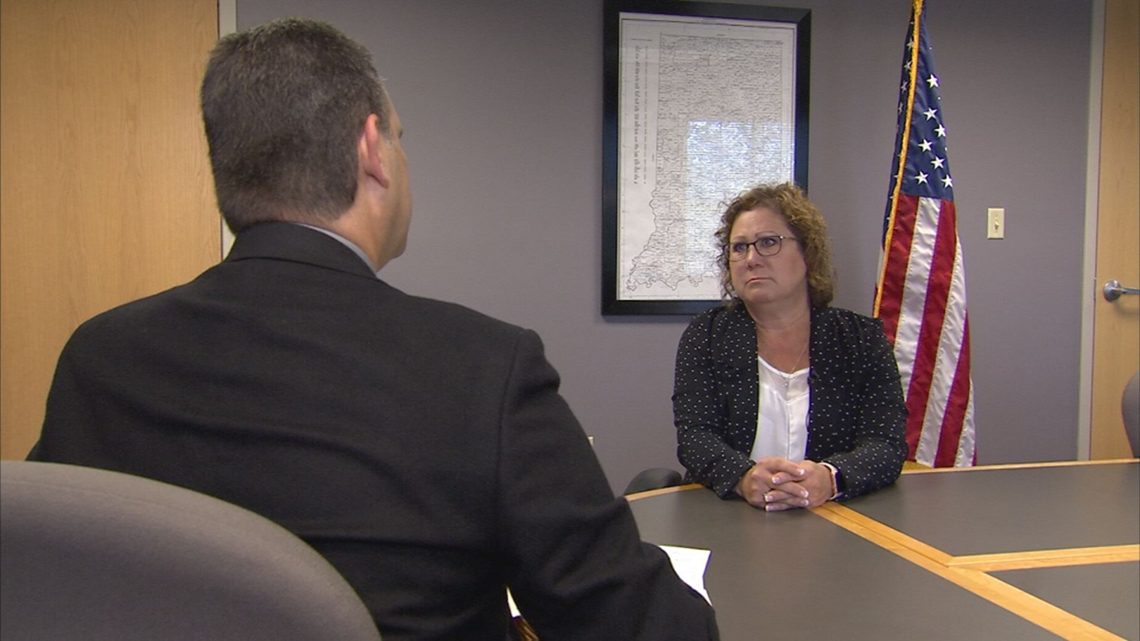
Many Hoosiers know that township trustees can offer assistance by providing needy families with food, rent and utility payments. Few know that their township trustee can cover the costs of essential medications, including prescriptions to treat diabetes, heart disease, high blood pressure, cancer and other life-threatening conditions. You don't have to lose your job or your home to qualify for help through a township trustee.
“You absolutely do not have to be homeless. It can be anyone who finds themselves in a situation where they cannot afford their basic necessities,” Driskell said. “It could be someone who got sick. It could be a newly single parent through death or divorce. It could be that something just went wrong, like a car broke down and their resources have to go to fix the car to get to work so they don’t have the resources they need for something else. There are a lot of people who have employment, but it is not enough to meet their current needs.”
Individuals seeking help through their township trustee must submit an assistance application in the township where they live. Applicants must also provide documentation such as proof of residency, proof of income and proof of expenses to help establish eligibility. Those who qualify for prescription assistance can get their essential medications provided through a local pharmacy at little or no cost. It is not intended to be a long-term solution, but rather a short-term option to help families get through a month or two while dealing with a financial crisis. Driskell said there are exceptions.
“Most of the time, townships assist in a temporary way, but there are certain members of our society we’re going to have to help long-term,” she said.
Ending a 70-year secret
Informed of the resource available through her township trustee’s office, Eggers expressed shock.
“I did not know that! No idea,” she told WTHR. “I think that's amazing. I want to yell it from the rooftops … because I think that's huge. That can be something to help you survive.”
Eggers said she has spent countless hours researching and networking with other diabetes patients to look for more affordable options to attain insulin. She wonders why prescription assistance is not publicized through township offices around the state.

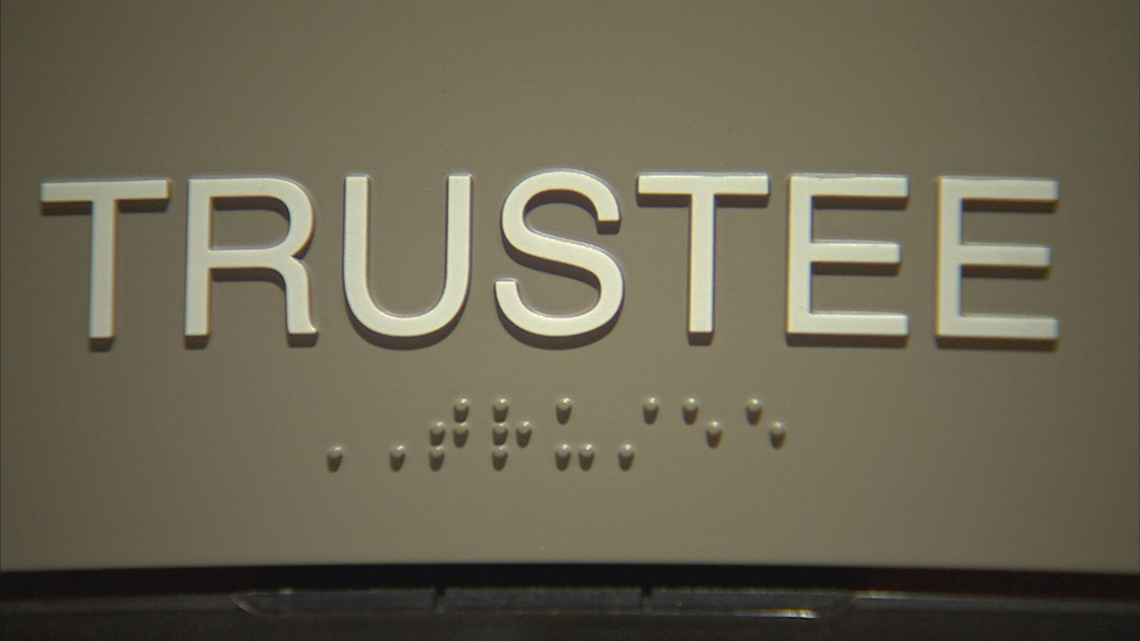
Indiana University Health, which boasts of having the largest network of doctors in Indiana, told 13 Investigates that neither its adult nor pediatric diabetes medical teams know that township trustees have the ability to provide prescription assistance.
“No one has heard of this,” an IU spokeswoman said Monday afternoon.
“We encourage our members to make themselves known and to make themselves as accessible as possible,” said Driskell. She acknowledged trustees across the state might need to consider additional outreach to make sure medical clinics and doctors’ offices are better informed about the availability of township prescription assistance.
To find contact information for the trustee’s office in your township, you can dial 2-1-1.
What about families with higher incomes?
The current economics of diabetes means thousands of Hoosier families are literally caught in the middle: their incomes are too high to qualify for township and other government assistance programs but too low to afford the devastatingly-high cost of the disease.
Ryan and Tara Walters find themselves struggling in that scenario. Their three sons – Brasen, 13; Judean, 9; and Solomon, 4 – have all been diagnosed with Type 1 diabetes.

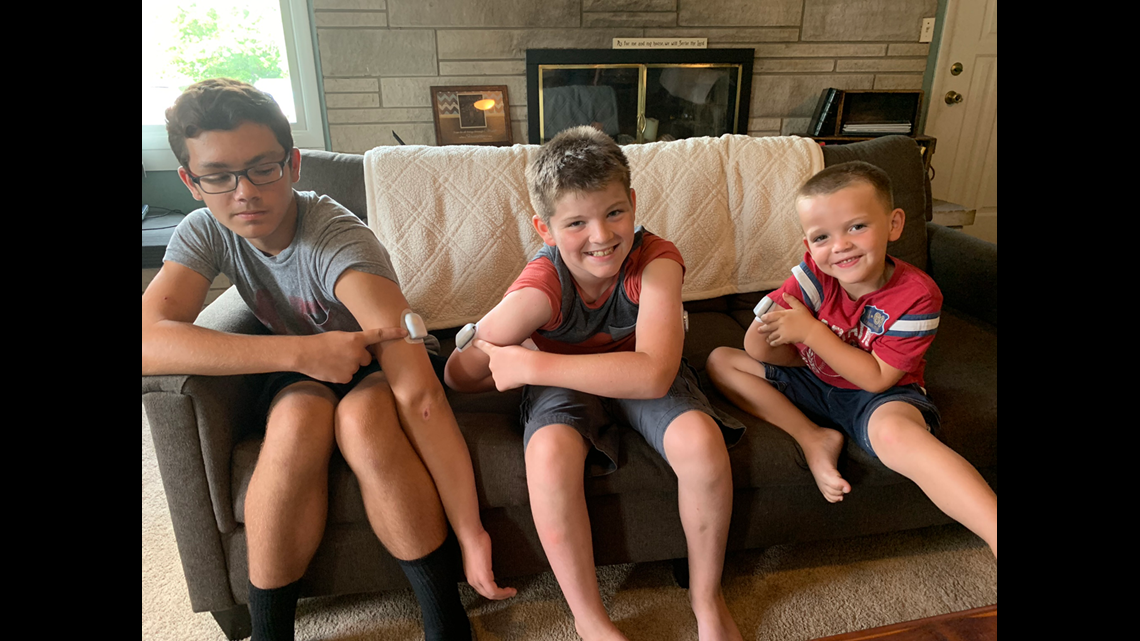
“We wake up thinking about it. We go to bed thinking about it. It’s on our minds all the time,” said Tara.
“I hate to say it, but I feel it consumes us way more than we’d like to admit,” agreed Ryan. “And the cost. That plays a huge factor in our lives.”
The family’s pantry is stocked full of insulin pumps, blood sugar test strips, alcohol swabs, and other medical supplies. Inside the refrigerator -- above the ketchup, almond milk and slices of American cheese – you’ll find 26 vials of Humalog fast-acting insulin, enough to last the boys about six weeks.

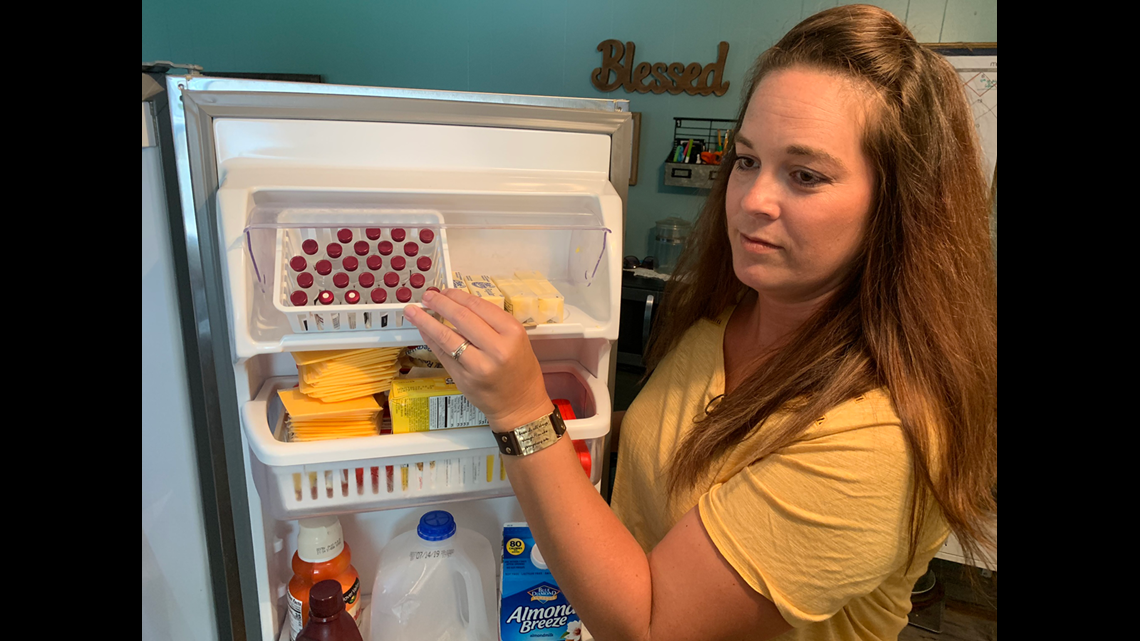
Luckily for the Walters, Ryan has a full-time job that comes with good insurance to help cover the majority of the medical costs. Despite that insurance plan, the Montgomery County family will still pay nearly $19,000 this year in out-of-pocket costs for insulin, medical devices and testing supplies to treat the boys’ diabetes. That’s not just $19,000 this year; that’s every year — a daunting reality.
“You need to pay this for all that [insulin and equipment] or your sons are going to die,” said Ryan, holding back tears. “Just think about that. That’s unfair. Just doesn’t seem humane to do that sort of thing to people.”
“This is why we’re living paycheck to paycheck and sometimes not even making it then,” added Tara, who says they rely on the generosity of family members to make ends meet.
Recognizing the challenges of families like the Walters, a local charity was created to help.
Another resource for free insulin
Lisa Oberndorfer knows all about Type 1 diabetes after her son Will was diagnosed with it a few years ago. Together, they founded Diabetes Will's Way, a non-profit organization that gives families a little relief from the high costs of their kids' diabetes.
“We are really the only resource I'm aware of in the nation that does what we do,” Oberndorfer told WTHR from her home in Carmel. “We strictly fund families that have insurance but still have out-of-pocket costs that are so high, they can't afford what their doctors prescribe.”
Nurses, teachers, truck drivers, construction workers, small business owners and members of the clergy are among the people who have applied for grants. “We help middle America and these are the people that are struggling to find ways to pay for their child’s disease,” Oberndorfer said. “The cost of this disease, it's not sustainable for most families and it's devastating.”
So far, the five-year-old charity has helped 121 children across the country, awarding more than $100,000 in grants to buy them insulin and desperately-needed medical supplies. The organization has two types of grants: a durable medical equipment grant that helps buy electronic insulin pumps and continuous glucose monitors (CGMs), and an emergency cash grant that can be used to purchase daily diabetic supplies such as insulin, test strips and sensors. The assistance is intended for children and young adults up to age 26.
“These are kids who can go and dream and be anything they want to be. They just need a little help from the medical side,” said Oberndorfer, who acknowledged thousands of families who might benefit from her charity have not yet learned it exists.
The Walters family is very familiar with Diabetes Will’s Way. All three of the boys recently received continuous glucose monitors through DWW grants, so no matter where the kids are, those electronic devices monitor their blood sugar and send constant updates to their parents' cell phones. Based on the readings, they can then receive an instant dose of insulin with the push of a button.
It's been life-changing technology for the Walters family, which used to manually check all three boys’ blood sugar readings round the clock with finger pricks, then manually measure and inject insulin each time it was needed. Now, that all happens automatically – even when the boys are not with their parents. And this spring, Brasen’s monitor alerted his parents that his blood sugar was dangerously low in the middle of the night. They jumped out of bed to find their son was already having a diabetic seizure and were able to get him medical attention quickly.
“Thank goodness he had the CGM,” his mother said. “Working with Diabetes Will’s Way, it was huge – huge – because we wouldn’t have been able to afford it.”
Families can apply for a Diabetes Will’s Way grant and interested donors can make a contribution by visiting the organization’s website.
Drug makers now offering bigger discounts
Pharmaceutical companies have been facing growing Congressional pressure to lower the cost of insulin and other drugs, and some have responded with new or improved programs to assist consumers.


Indianapolis-based Eli Lilly & Company recently introduced a reduced-price version of its popular Humalog insulin.
“Insulin Lispro, which is the same insulin as Humalog but with a 50 percent lower list price, has been available to patients since May 22,” company spokesman Greg Kueterman told WTHR. “Patients can talk to their doctor or to their pharmacist, who can automatically switch Humalog prescriptions to Insulin Lispro if, based upon a person’s insurance coverage, the retail price is lower for the patient.” (The company points out that many insured customers will discover Humalog will still have a lower price at their pharmacy.)
The company also expanded eligibility for its free insulin program for low-income customers, increasing participation to include those who earn up to 400 percent above the federal poverty level. (The previous threshold for the program was up to 300 percent of the FPL.) That means a single individual who makes up to $49,960 can now be included in the program, as is a family of four with an income of up to $103,000.
Kueterman said Eli Lily will be capping the monthly insulin cost for people with commercial insurance plans – a change that will occur at the pharmacy without patients needing to take any action. He blamed much of the consumer distress surrounding high insulin costs on high-deductible insurance plans, which require families to pay thousands of dollars in medical expenses before coverage kicks in. The Lilly spokesman also said 90 percent of diabetics who rely on Lilly insulin pay $50 or less for their monthly prescription, while 43 percent pay nothing. Nevertheless, he acknowledged “there are more people who still need help, and we need real policy changes to help everyone who uses insulin.”
Customers who want to learn more about Lilly’s discount products can call the company’s Diabetes Solution Center at 833-808-1234.
A spokesman for Sanofi, which produces Lantus and several other insulins, said his company also offers programs to assist diabetic consumers. The offerings include a Insulins Valyou Savings Program, which offers $99 insulin to uninsured customers who pay cash.
“We provide medications at no charge for qualified low-income, uninsured patients through the patient assistance component of the Sanofi Patient Connection program,” said company spokesman Nicolas Kressmann, adding that insured patients can participate in the Sanofi’s co-pay programs which limit out-of-pocket expenses.
Sanofi customers who have financial challengers paying for their insulin or who need assistance navigating their insurance are encouraged to call 855-984-6302.
Novo Nordisk, the drug maker that produces the popular NovoLog insulin, told WTHR it provides human insulin for about $25 per vial through programs with CVS and Walmart. (Compared to fast-acting insulin like NovoLog, human insulin has a delayed onset reaction, which requires it to be injected prior to eating. It also has a variable duration of action that can lead to low blood sugar after a meal is over. These undesirable features, compared to fast-acting insulins, have resulted in fewer medical providers prescribing this type of insulin.)
Novo Nordisk also offers free insulin to those who earn up to 400 percent above the federal poverty level, and the company has co-pay programs to help defray costs for those with high-deductible insurance plans.
“There is a complicated landscape of laws, regulations, market forces and supply-chain entities that impact the price of prescription drugs. Even for some patients with health insurance, high deductibles and restrictive formularies can make insulin unaffordable,” a Novo Nordisk representative told WTHR. “We know that as the healthcare system has changed a growing number of Americans with diabetes struggle to pay for their healthcare, including medicines made by us. As a company focused on improving the lives of people with diabetes, this is not acceptable.”
Patients interested in learning more about Novo Nordisk’s discounted insulin programs can contact the company at 800-727-6500.

